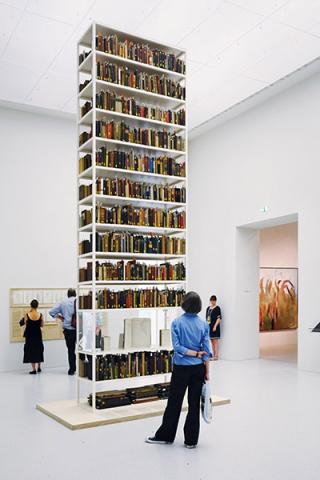Looking to the World
One of the art world’s premier events gathers artists from its margins.
Stepping off the tram in a run-down and industrial part of town, I wasn’t sure what to expect. I had just traveled about 15 hours from New York to Germany for the international art exhibition documenta (with no capitals), which takes over the small city of Kassel once every five years. I didn’t really know what I was getting into there either: Organizers released almost no information about the chosen artists or the overall conception, and documenta’s short duration (only 100 days) meant that there were few photographs or reviews online.
I went to documenta because I wanted to see what the curatorial team, led by the Polish critic and curator Adam Szymczyk, felt was the most important artwork of today. Who is the new avant-garde? In previous iterations, major artists, movements, and even genres have begun at documenta.
The curators had selected few familiar names, focusing instead on artists typically overlooked by the art world’s implicit and explicit racism, classism, and misogyny. There was a persistent desire to select artists from the margins of the art world—recent immigrants from developing countries as well as displaced indigenous peoples from Europe and North America. Indeed, migration often featured as a subject of the works themselves.
For example, a short film by the Iranian artist Hiwa K, The View from Above, presented the Kafkaesque journey of an Iraqi refugee as he tries to establish asylum status in the German city of K (for Kassel).
In one section, the camera slowly pans over a miniature model of Kassel showing its destruction from an Allied bombing campaign. The irony in this work sits on the surface—the German officials in the film fail to understand the life of a refugee from a destroyed town, despite the fact that their own country was so thoroughly bombed only 60 years ago.
Hiwa K’s video, which critiques the developed world’s response to current political turmoil, was documenta at its best. However, as a whole, the lack of accessible and educational interpretative materials made it difficult to make sense of many installations, and after a while, the curators’ ironclad belief in open interpretations and multiple narratives became alienating. Although documenta is a pilgrimage for many artists and art historians, it is also one of the world’s most visited art exhibitions. With so many discombobulated installations speaking in a language tailored only to art-world insiders, I found myself wondering: What is the point of a progressive curatorial strategy if it does not also aim to be approachable to everyone?
That said, both artists and curators at documenta were turning toward the world and its problems, disseminating facts and history, and moving beyond purely aesthetic aims. Overall, the works that succeeded far outweighed the failures, and
I hope more institutions take a risk on ambitious and challenging shows like this one.
History of Art Ph.D. candidate Elliot Krasnopoler studies photography’s effect on contemporary art and its relationship to memory and place.
Published on: 12/20/2017
